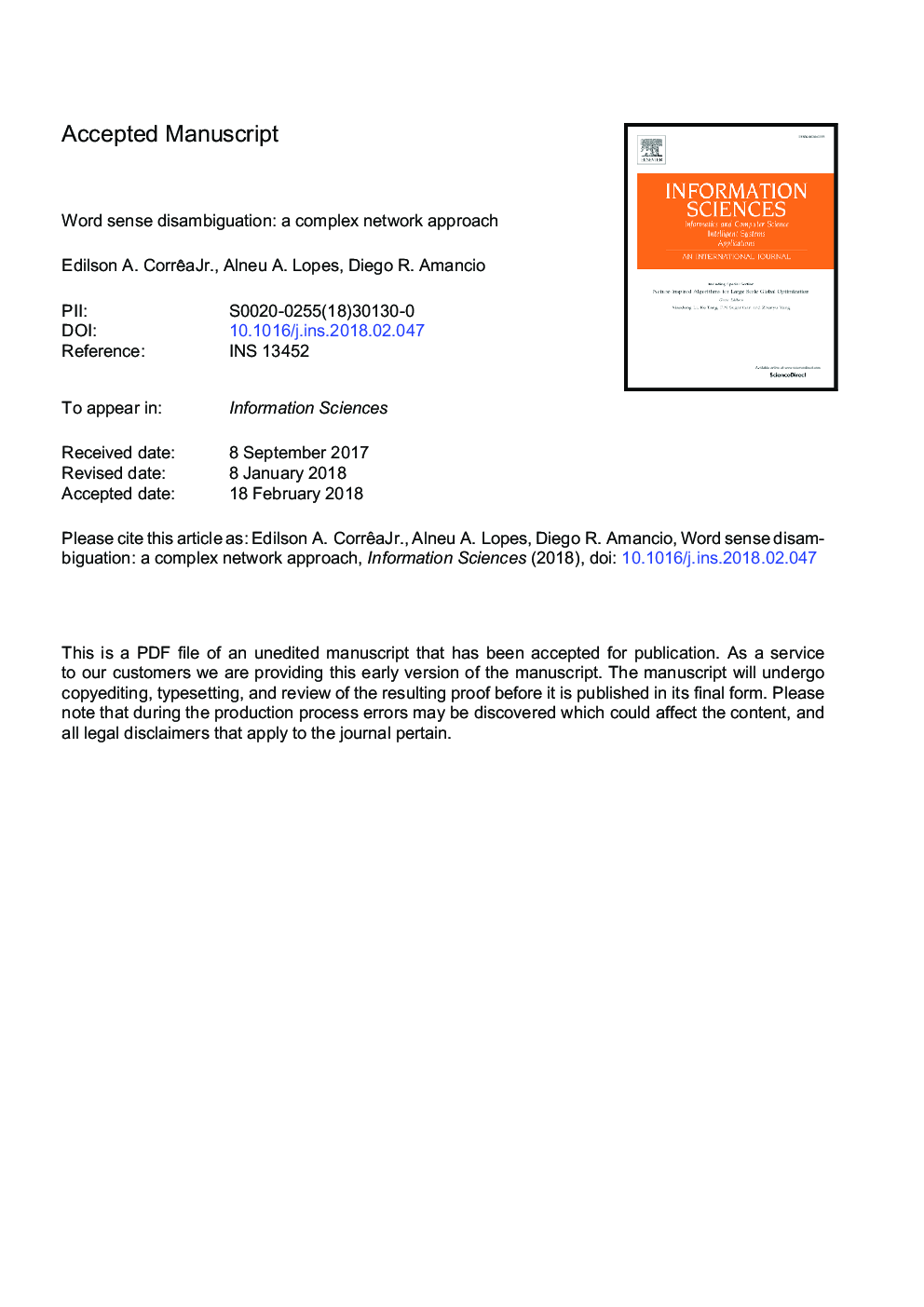| کد مقاله | کد نشریه | سال انتشار | مقاله انگلیسی | نسخه تمام متن |
|---|---|---|---|---|
| 6856540 | 1437963 | 2018 | 31 صفحه PDF | دانلود رایگان |
عنوان انگلیسی مقاله ISI
Word sense disambiguation: A complex network approach
ترجمه فارسی عنوان
ابهام واژگانی کلمه: یک رویکرد شبکه پیچیده
دانلود مقاله + سفارش ترجمه
دانلود مقاله ISI انگلیسی
رایگان برای ایرانیان
کلمات کلیدی
شبکه های پیچیده علم شبکه، طبقه بندی متن، نمودار دو طرفه، شبکه های دو طرفه، بیانیه واژگان معنایی،
موضوعات مرتبط
مهندسی و علوم پایه
مهندسی کامپیوتر
هوش مصنوعی
چکیده انگلیسی
The word sense disambiguation (WSD) task aims at identifying the meaning of words in a given context for specific words conveying multiple meanings. This task plays a prominent role in a myriad of real world applications, such as machine translation, word processing and information retrieval. Recently, concepts and methods of complex networks have been employed to tackle this task by representing words as nodes, which are connected if they are semantically similar. Despite the increasingly number of studies carried out with such models, most of them use networks just to represent the data, while the pattern recognition performed on the attribute space is performed using traditional learning techniques. In other words, the structural relationships between words have not been explicitly used in the pattern recognition process. In addition, only a few investigations have probed the suitability of representations based on bipartite networks and graphs (bigraphs) for the problem, as many approaches consider all possible links between words. In this context, we assess the relevance of a bipartite network model representing both feature words (i.e. the words characterizing the context) and target (ambiguous) words to solve ambiguities in written texts. Here, we focus on semantical relationships between these two type of words, disregarding relationships between feature words. The adopted method not only serves to represent texts as graphs, but also constructs a structure on which the discrimination of senses is accomplished. Our results revealed that the adopted learning algorithm in such bipartite networks provides excellent results mostly when local features are employed to characterize the context. Surprisingly, our method even outperformed the support vector machine algorithm in particular cases, with the advantage of being robust even if a small training dataset is available. Taken together, the results obtained here show that the representation/classification used for the WSD problem might be useful to improve the semantical characterization of written texts without the use of deep linguistic information.
ناشر
Database: Elsevier - ScienceDirect (ساینس دایرکت)
Journal: Information Sciences - Volumes 442â443, May 2018, Pages 103-113
Journal: Information Sciences - Volumes 442â443, May 2018, Pages 103-113
نویسندگان
Edilson A. Jr., Alneu A. Lopes, Diego R. Amancio,
